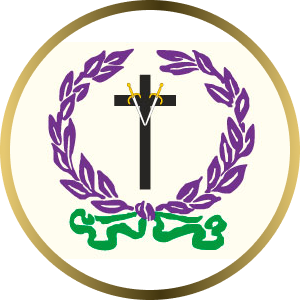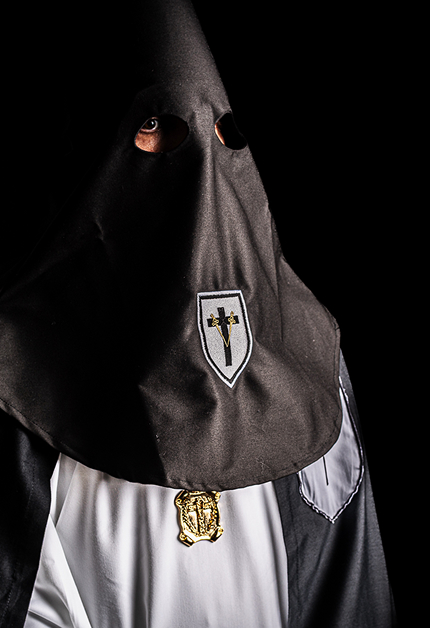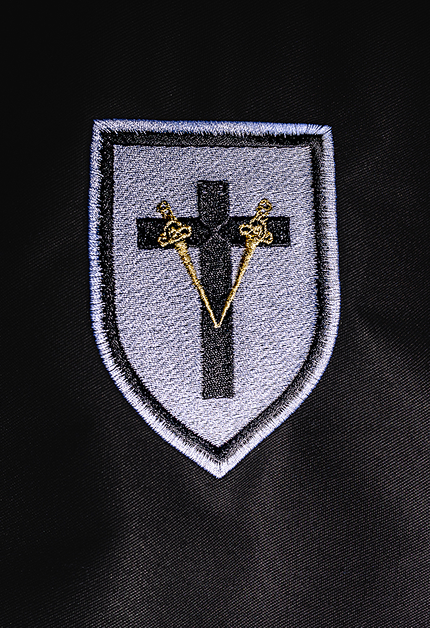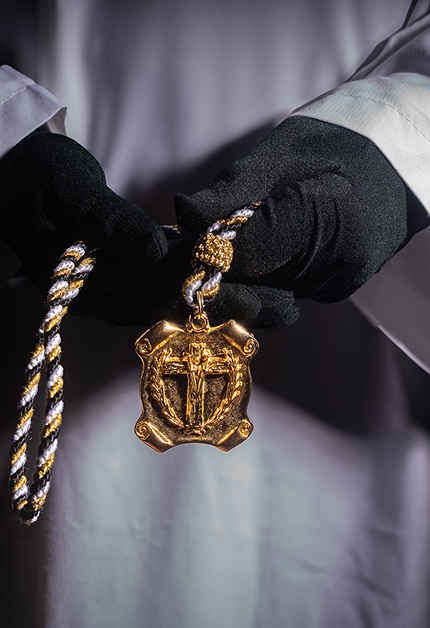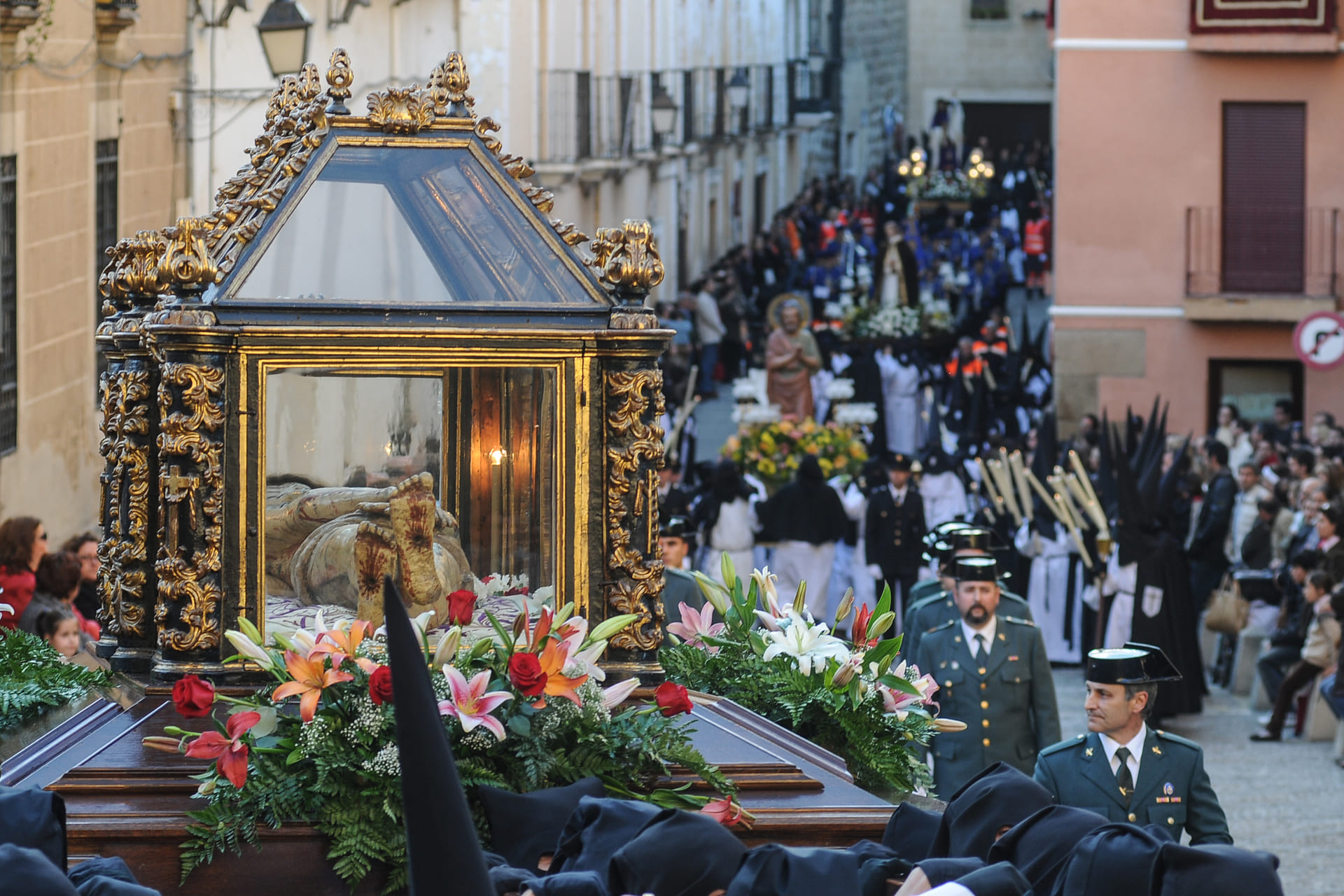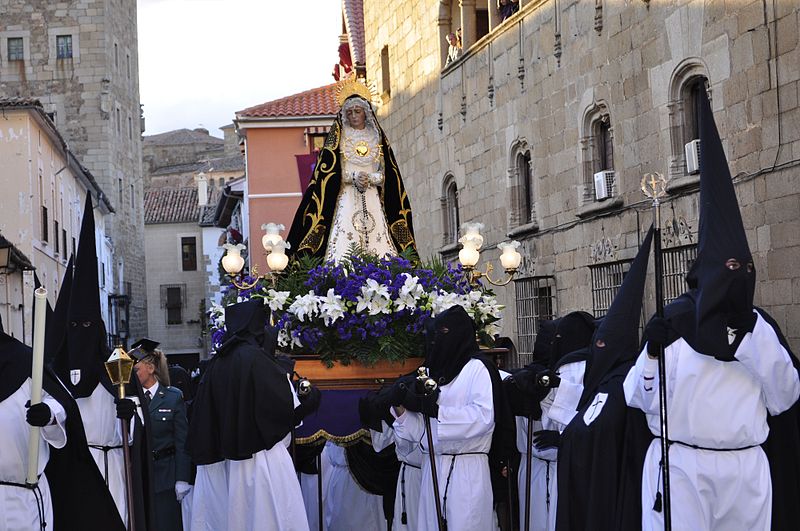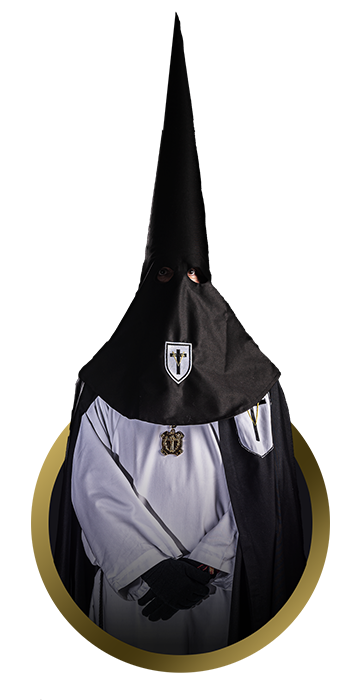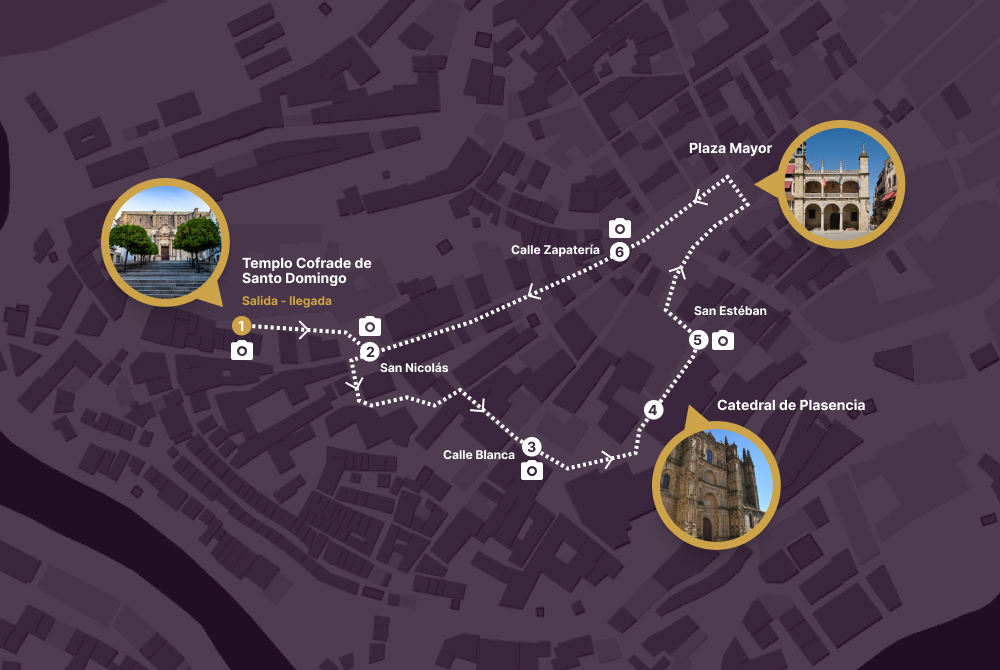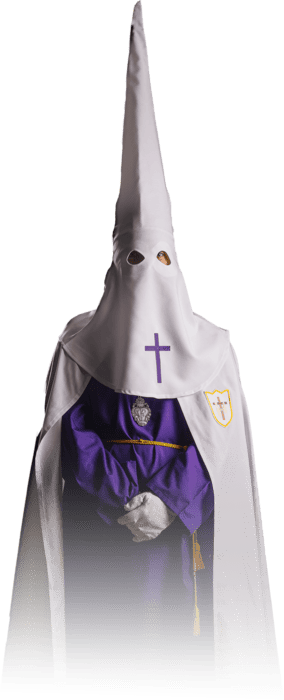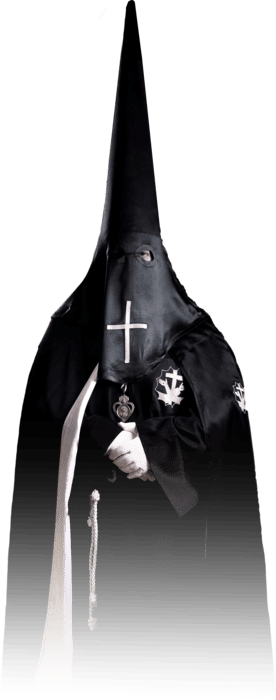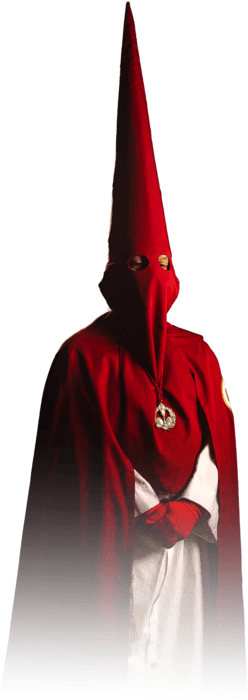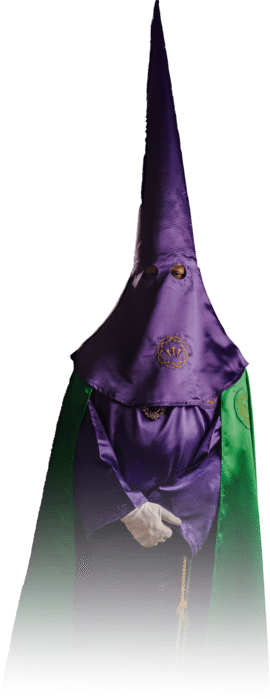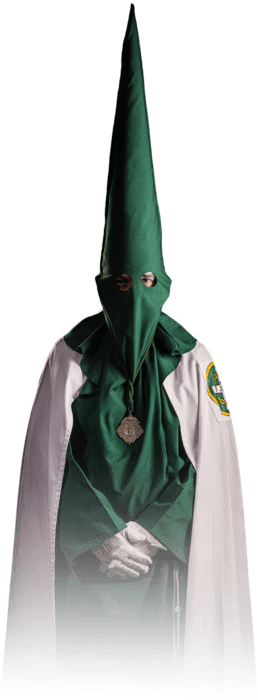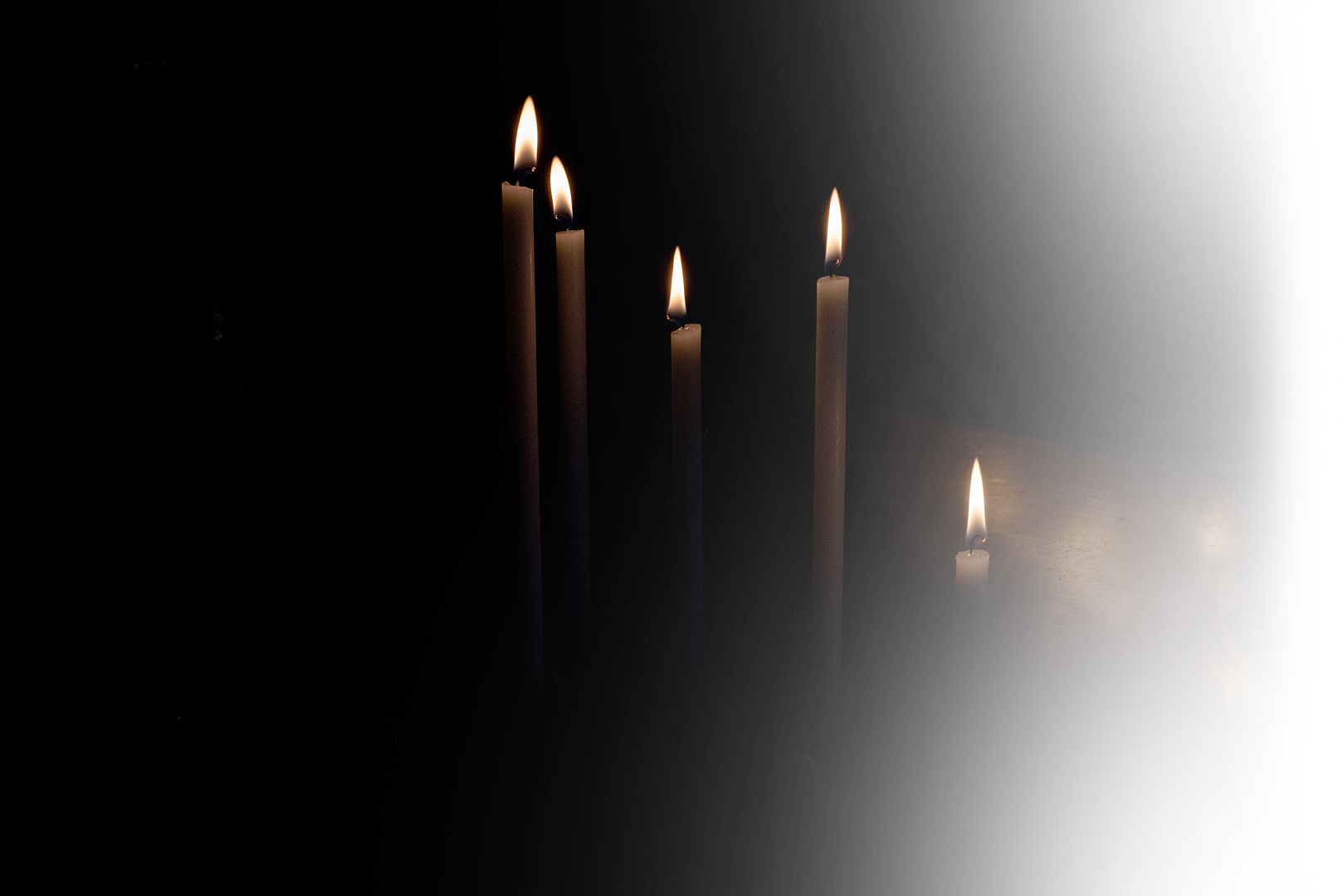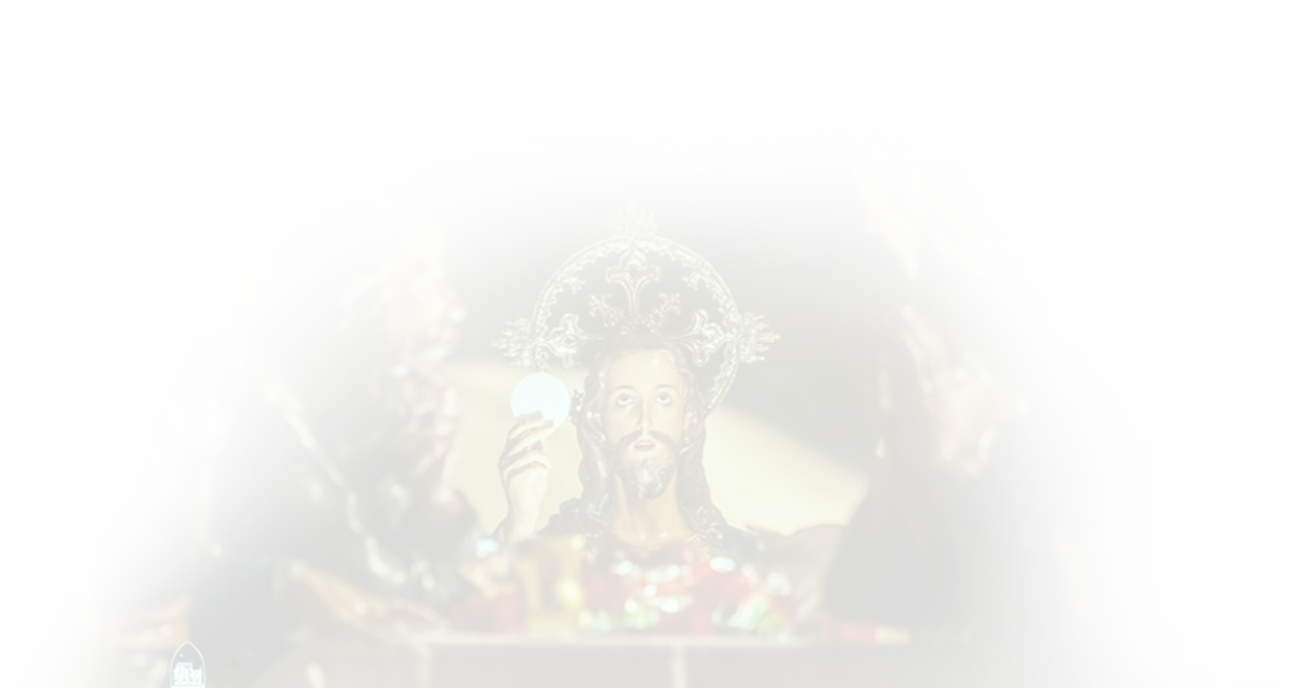Holy Sepulchre
The Holy Sepulchre is one of the most significant effigies of Plasencia’s Holy Week. It is a 16th century recumbent sculpture by an unknown author. It is made entirely of a very well preserved, polychrome cork. This surprising particularity suggests that the sculpture may be unique. In the 1980s it was cleaned by the restorer of the National Museum of Sculptors of Valladolid, Mr. Mariano Nieto Pérez. The restorer himself was incredibly surprised, as he had never seen or encountered a polychrome cork sculpture. Until not long ago, this Christ was dressed as if he were in laying in a bed, to that end, the Plasencia doctor Dr. Ezequiel Delgado had brought for the Christ a magnificent embroidered satin bedspread from the Philippines. In the18th century, a wig of natural hair was placed on the Christ, obscuring the carved hair that the effigy possessed. The urn where the sculpture rests is Baroque and dates back from the 17th seventeenth century. The gilded parts are 24-carat gold leaf. Created by an unknown artist, who must have been highly skilled, as the interior lighting was provided using candles hidden behind translucent glass which allowed the light in. The smoke and heat escaped through ingenious completely invisible chimneys, as these are entirely carved into some of the beautiful Baroque finials and ornaments which crown the urn. It has been preserved in perfect condition since its sculpture. The electric lighting system was only installed in the second decade of the 20th century. It was also cleaned using disinfestation by the restorer Mr. Mariano Nieto Pérez.


